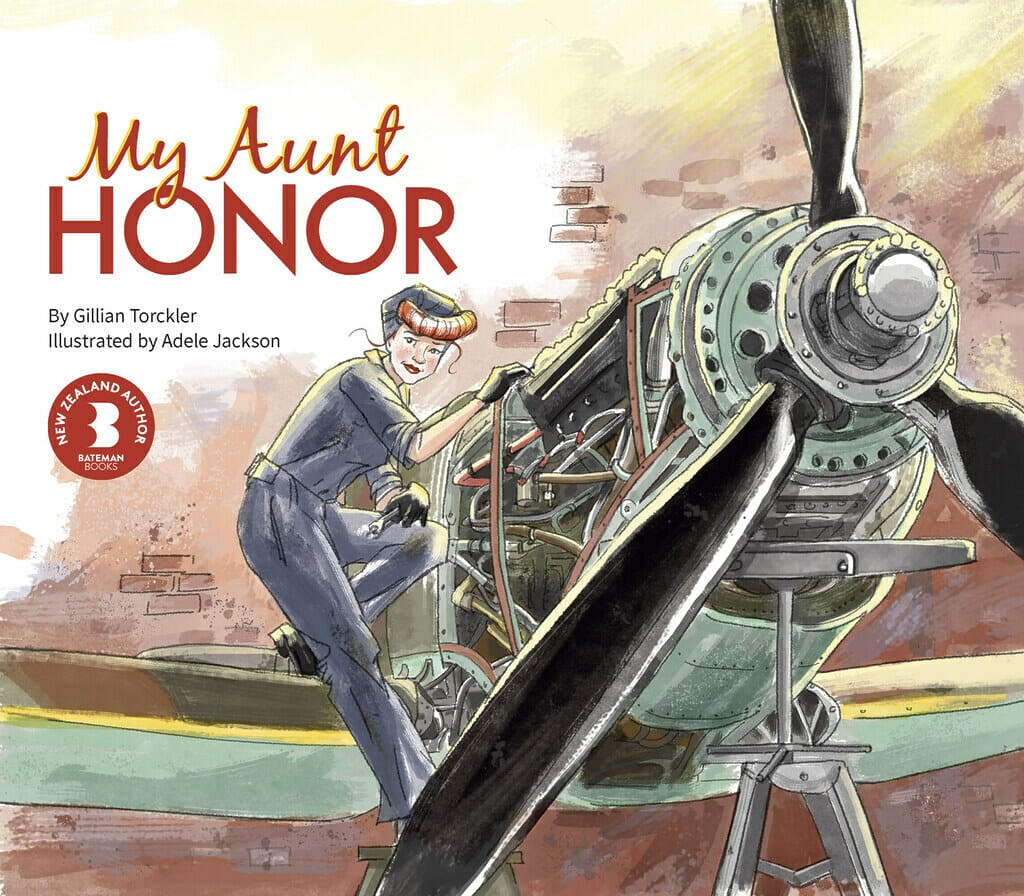My Aunt Honor by Gillian Torckler is a non-fiction picture book about the active service role of women in WWII. Gillian Torckler talks below about her inspiration behind the book.

Every now and then, my mother would reminisce about her family and her Aunt Honor who died in World War II. My mother was a little girl during the war and her memories were of a glamourous woman with bold red hair who always bore gifts. Honor was the youngest of my grandmother’s sisters. My mother always said she died in active service, which I had thought was an exaggeration (surely, women were not in active service roles?) until I began research for my sophisticated picture book My Name in Henry Fanshaw about New Zealand’s bomber squadron in WWII. That’s when I learned the true extent of women in WWII.
I looked up Honor Hassett’s war record and found the official record of her death and the air base where she was stationed and died. That led to an historian who told me about a man he’d interviewed for his own published history of that airbase in Dorset. The airman mentioned her hair and beauty and that he had been planning to go on a date with her the night she died. “Did you know she had bright red hair?’ the historian asked me. Well, yes, I did. I should have replied, “you should see the redheads in my extended family!” We have managed to weave some of those details into the book through the wonderful illustrations of Adele Jackson.
The historian confirmed that Honor was a Spitfire mechanic and at that point I realised there was a story to be told. My research about women in war revealed that many women served in the military during the war. I knew women worked as nurses, drivers, spies and codebreakers, but I hadn’t realised they were trained as pilots and ferried planes across the Atlantic Ocean. Or that they were mechanics at airbases. Most of the history books talk about men and not women. Women who put their lives at risk. Women who died.
I came to appreciate how unusual it would have been for a woman to join the armed forces and how society would have reacted. My own great aunt was refused a church funeral because the Royal Air Force offered, and the family accepted, a military funeral for Honor. This was the early 1940s in England and it simply “wasn’t done”. Women had traditional roles in the home and generally weren’t regarded as having the temperament or ability to serve. How wrong those assumptions were. In researching this book, I discovered some other remarkable women, and we feature them in the background of the book.
The more I researched, the more I realised that women were integral to winning the war, yet they are rarely portrayed this way. Much is written about the male “heroes” and not about the many people, men and women, that worked behind the scenes to support them. One of those was my Great Aunt Honor. Women were an essential, yet often overlooked, part of the war effort and the war changed the role of women in society. Many women laboured in civilian jobs replacing the men that were away fighting. They worked in factories, on farms, as drivers, and as teachers. After the war many of these women did not want to give up their jobs for the returning men, yet were expected to. Traditional society roles for women were being left behind. After all my research, I do wonder what Honor would have done after the war if she had survived. But as many who lost their lives we will never know.
My family are English, and for them this isn’t a particularly unusual story. Every English family of their generation lost beloved family members or friends. So, although they spoke of it, when they did it was the day they left their local church community because their local priest refused to let Honor have a military funeral because “it wasn’t right for a woman”. They opted for a different burial location so she could receive the honour she deserved. I come from a family of strong women and Honor was always in that mix of stories as we grew up. I do wonder what she would have achieved if she had lived.
Related Article: Through Shaded Glass: Women and Photography in Aotearoa








